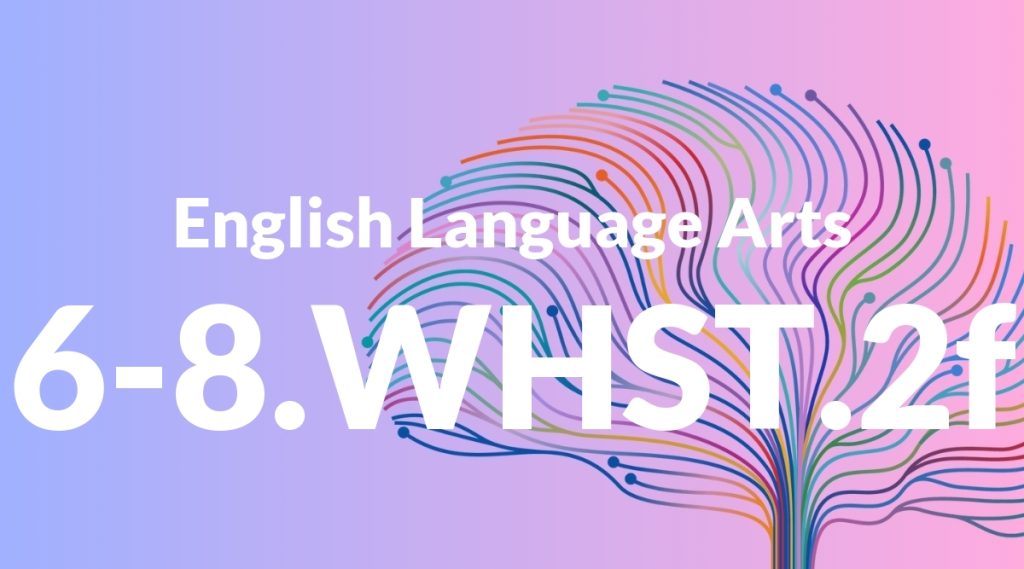Standard: 6-8.WHST.2f – Provide a concluding statement or section that follows from and supports the information or explanation presented.
Grade level: Grade 6-8
Subject: English Language Arts
Domain: Writing: History, Science & Technical Subjects
Teacher Overview
This standard emphasizes the importance of crafting effective conclusions in writing. It ensures that students can provide a final statement that not only summarizes but also supports the information or explanation presented. This skill is crucial as it helps students create cohesive and compelling pieces of writing. Before tackling this standard, students should be comfortable with organizing their writing and presenting clear information. They should understand the structure of introductory and body paragraphs.
After mastering this standard, students will be able to craft more sophisticated arguments and analyses, creating cohesive and compelling pieces of writing across various subjects.
Common Misconception 1
A common misconception is that a conclusion is merely a summary of the information presented. This is incorrect because a conclusion should also provide a final insight or implication based on the information given, adding depth to the writing.
Intervention 1
To address this misconception, use examples of strong conclusions that go beyond summarizing. Encourage students to think about the broader implications of their information and how to convey this in their final statement.
Common Misconception 2
Another misconception is that a conclusion is optional. This is incorrect because a conclusion is essential for providing closure and reinforcing the main points of the writing.
Intervention 2
To remediate this, demonstrate the impact of writing without a conclusion versus writing with a strong conclusion. Highlight how a conclusion ties everything together and leaves a lasting impression on the reader.
Prerequisite Knowledge
Students should understand how to organize their writing and present information clearly, as well as have a basic grasp of introductory and body paragraphs.
Subsequent Knowledge
Students will develop the ability to craft more sophisticated arguments and analyses, and will be able to create cohesive and compelling pieces of writing across various subjects.
Instructional Activities
- Analyze sample conclusions from various texts
- Practice writing conclusions for different types of writing assignments
- Peer review sessions focusing on the effectiveness of conclusions
- Group discussions on what makes a strong conclusion
- Interactive writing workshops with real-time feedback




